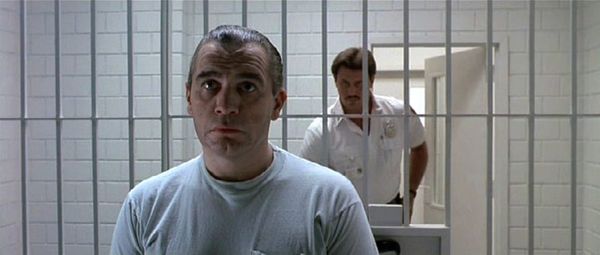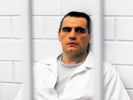Eye For Film >> Movies >> Manhunter (1986) Film Review

"Do you think that's a contradiction, Jack?"
These words, spoken by FBI profiler Will Graham lie at the heart of what is so compelling - both visually and narratively - about Michael Mann's adaptation of Thomas Harris's Red Dragon. Throughout the film, everything from his contrasting colour scheme to the seemingly contrary acts of his central characters creates tension, uncertainty, moments that are simultaneously repllent and charming, and even a level of surprising sympathy in the unlikeliest of settings.

Graham (William Petersen) is damaged goods but not in the cliched, drunken, broken family way usually trotted out in this sort of film. It is his work that has left him scarred, particularly an encounter with sociopath Hannibal Lecktor (Brian Cox), whose evil thought patterns and seductive manner have left him psychologically contaminated. With a new killer, nicknamed the Tooth Fairy, on the loose, however, his old boss Jack (Dennis Farina) is desperate enough to want his best man back in the game, no matter what the cost.
In order to get closer to the Tooth Fairy's mentality - and help put to rest his own mental bogeyman - Graham visits Lecktor (whose name here has been changed from the spelling of the novel for no discernible reason), only to find that the serial killer and his new quarry have formed what could amount to a deadly alliance. Soon he and his colleagues are in a race against time to work out who the Tooth Fairy is before the next full moon.
Mann cleverly explores the similarities and contrasts between hunter and hunted, such as making Graham's first visit to a house replicate that of the killer, so that we know in an instant that he is seeing through the eyes of the murderer even as the experience brings him pain not pleasure. Mann also deftly employs colour to indicate mood, so that Graham is mostly shot in deep, tranquil blues while with his wife (Kim Greist), contrasting sharply with the clinical whiteness of Lecktor's cell - itself in marked contradiction to the outwardly charming but inwardly sinister doctor. The Tooth Fairy's home is typified by sickly reds and greens. Mann is also interested in exploring all the angles - both architecturally and emotionally - using light/shadow, buildings and even furniture to enhance his intended mood.
Perhaps the most interesting set of contrasts, however, are within the characters themselves. Cox's Hannibal is a masterclass in moderation. His sociopathic killer is much less operatic than Jonathan Demme and Anthony Hopkins' take in The Silence Of The Lambs, and with no indication that he will escape here, his mind games are more to the fore. Mann cleverly leaves us wanting to see more of him, making him a brooding presence in the shadowy recesses of the story but never letting him dominate the all-important thriller mechanism.
The Tooth Fairy is also given much more depth than that usually afforded to evil villains. He is not simply a one-note character but someone with whom it is possible to forge a tentative connection. The wonderful Tom Noonan makes him arrestingly unhinged at the same time as retaining glimmers of humanity - this is a fractured soul, as much to be pitied as reviled, a fact epitomised in a scene when, just after making love, he lies with a woman's hand over his mouth, his face a mask of pain.
Petersen, meanwhile, fresh from William Friedkin's almost as impressive To Live And Die In LA, puts in an excellent turn as the troubled agent. Although some of his family scenes lack the punch found elsewhere in the script, he crafts a believable, multi-faceted character whose empathy has a dangerous side. His character may be less memorable than the killers but it is no less complex and he offers a commanding performance that leaves you slightly bewildered as to why he didn't become a bigger movie name at the time. Even subsidiary roles, such as Dennis Farina's Jack, Stephen Lang's wonderfully repellent newspaper hack Lounds and Joan Allen's physically vulnerable but emotionally strong blind woman Reba, carry memorable weight.
Characters, of course, are nothing without plot and Mann never forgets his license to thrill. Manhunter may begin as a slow-burn story but he knows how to turn the screw and scenes of the FBI agents racing against time are filled with tension while retaining a pace that makes them believable. His measured approach pays off in the highly stylised, frenetic and deliberately disorientating climax. He also provides a masterclass in creating tension without gore - finding more fear in implied violence and imminent doom than a bucketful of blood or cheap scare could ever provide.
Silence Of The Lambs might have gone on to be the film that really made a name for Lecter but the subtler, psychological chills of Mann's film are every bit as compelling.
Reviewed on: 04 Oct 2011

















